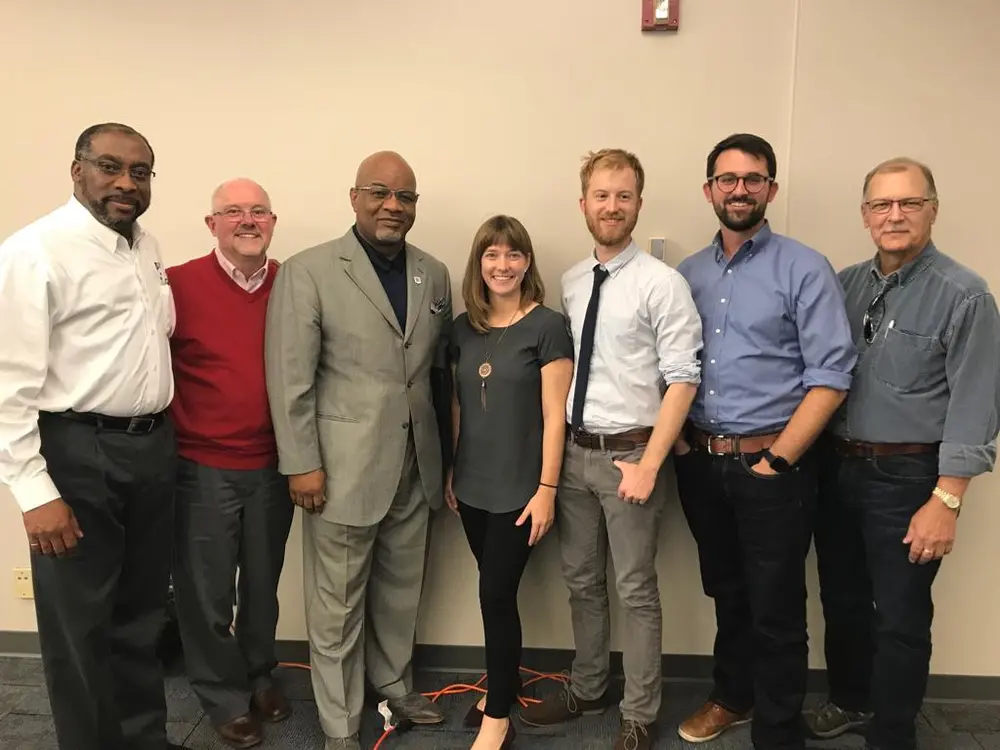
Although it is clear that the assembling groups with diverse perspectives and talents can provide opportunities for insight and efficient work, working in groups can present particular challenges. Differing schedules, expectations, and definitions of success can slow down or entirely derail a team effort. A new project led by Communication Professors Scott Poole and William Barley and PhD students Luisa Ruge-Jones and Sam Wilson aims to support diverse groups who are working on shared research. The project, "EAGER Germination: Crystallizing Transformative Ideas by Seeding a Diverse Knowledge Community,” is designed to facilitate collaboration among groups of academic researchers who are all working on questions related to food and water shortage.
The project is supported by the National Science Foundation (NSF), and responds to a call for creative and transformative approaches to complex research topics such as climate change. Poole and Barley's team saw an opportunity here to use theories and models from the field of Communication to support the collaboration of researchers who are all addressing a shared question or topic. Dr. Barley’s work has shown that Communication is central to both the challenges and solutions of collaboration. "Most of the challenges that diverse teams face are communicative in nature,” he explained, and "the best way we know of addressing them is through explicit and ongoing dialogue.”
The EAGER Germination project aims to provide knowledge and strategies for addressing the miscommunication or misunderstandings that can come arise in group collaboration. To do so, the research team from Illinois recruited a cohort of researchers and has spent the past semester helping the cohort develop grant proposals and preparing them to be effective research teams. The group traveled to Jackson State University last week to lead the last of three organized workshops, where the Illinois team provided the cohort of researchers with guided trainings, demonstrations, and presentations designed to help each time identify and overcome barriers to effective group collaboration.
The cohort of researchers are made up of Professors from across the country and from various academic disciplines. Many are also members of the Hispanic Association of Colleges and Universities (HACU), the National Association for Equal Opportunity (NAFEO), and the American Indian Higher Education Consortium (AIHEC). The diversity of these teams is one of their strengths, said Illinois Communication PhD student Luisa Ruge-Jones. “We know that diverse groups members can facilitate creative research,” she explained. But diverse research teams also face a diverse set of barriers, so the workshop included guided discussions and activities designed to give group members tools for addressing the barriers that may arise from groups working in different types of institutions or in different fields of study.
Diversity and collaboration can be in conflict with each other, but they do not need to be. Dr. Barley reflected that the EAGER Germination project has left him optimistic about the idea of diverse groups producing innovative solutions to big questions. "Our participants not only assemble radically diverse perspectives on important problems” he says, but "many of them have connections to the communities that are most affected by these challenges.” Having different relationships with a research question can lead to new ideas and greater consideration for how to approach a topic. Professor Barley described the combination of diversity and collaboration as being able "to produce projects that are both creative and have real potential to make an impact where it is most needed."